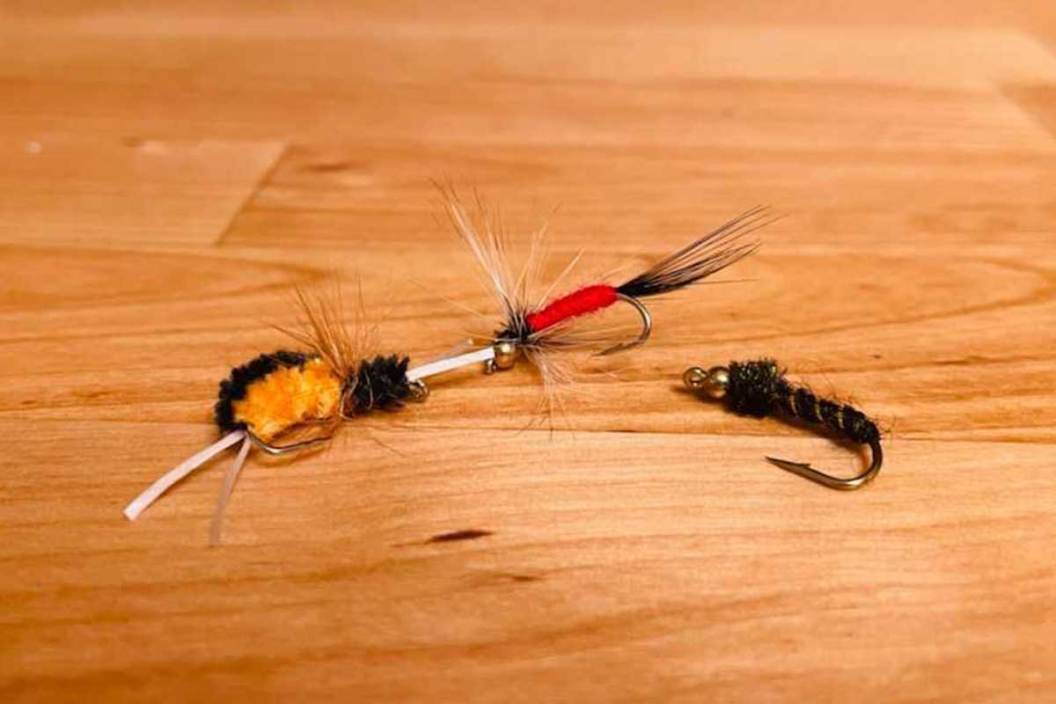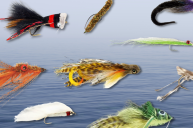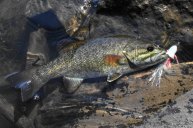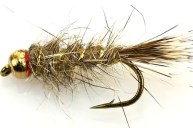Fly tying really is a form of art, but it can take several years of practice to become fully comfortable with it. The start-up costs can seem a bit high, but after tying your own for a while and becoming proficient, you'll notice that the money is worth it. There's also something special about landing a trout with a hand-tied fly. And the best part is, the top flies for beginners aren't even hard to learn. Still, fly tying can be very challenging. The key to learning fly tying is constant repetition, while slowly transitioning from basic flies to more complicated and detail oriented ones. When I first started fly tying, I stuck to four basic flies and practiced them every day. Once I had that baseline down, I was familiar enough with the basics that I could branch off into more complicated flies. Here are those four flies I kicked started my tying with, and all are great for beginners.
Worm

Sometimes called the San Juan worm or the "Sili" or "Squirmy" worm, this is by far the easiest fly to tie, but it will let you practice basic skills that will further help you on other fly variations. Don't let the ease of tying fool you—a well tied worm can be extremely effective for trout and smallmouth bass. When there are no bugs hatching or when the baitfish streamers aren't working well, I love to tie on a worm and let it do its magic. Particularly after a heavy rain, worms will appear in masses within the streams and fish will be after them. After a few practice rounds you'll be able to tie a worm in under five minutes and have a great supply to use on your next outing. Don't just stick with one color—add a few variations of red, pink, and tan, then experiment with adding more weight by including a bead head or lead foil.
Mop Fly

Dylan Hayward
So-called "purist" fly anglers will probably hate me for this one, but I still admire the versatility and quick tying characteristics of the mop fly. Besides, no matter what any critic says, this fly catches fish! It can be tied with minimal material, including a 10- to 12-sized hook, a 3.5mm tungsten head, peacock dubbing, tying thread, and mop material. That will be pretty much be all you need. These flies can imitate caddisfly larvae as well as inch worms. When you use a fluorescent green body, they also look almost identical to the sphinx moth caterpillar. After a few tying attempts, you'll be able to knock out a whole batch of these in under 30 minutes.
Beadhead Caddis
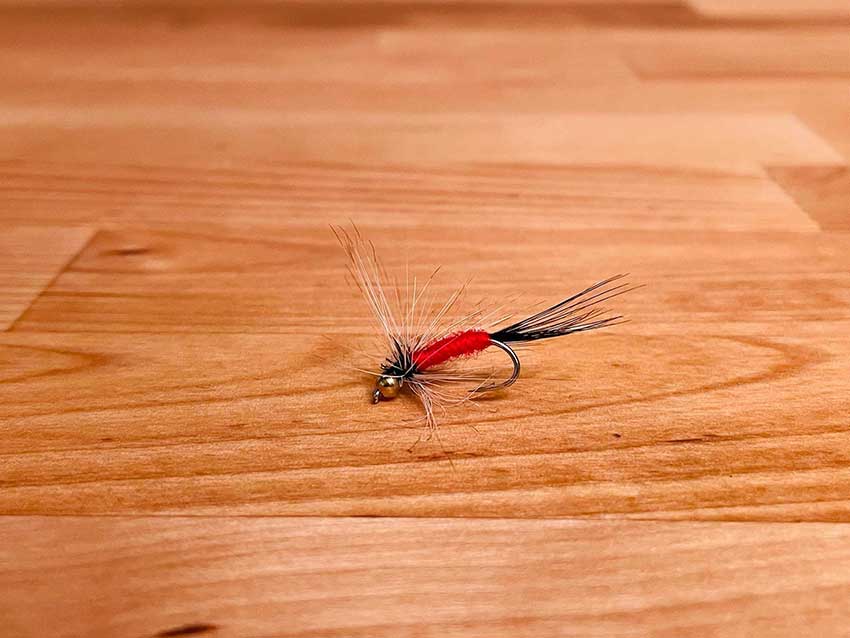
Dylan Hayward
The Beadhead Caddis is another very popular fly that can be used throughout the entire year, although I prefer to use them in the late winter and early spring. They are fairly simple to tie, and produce great results when other patterns aren't doing the trick. I like to use a size 12 nymph hook with a 1/8 gold cyclops bead for the head. Some 8/0 black thread will work best to wrap down the hook shank. Using Hairline Caddis Green dubbing, you can create a noodle on top of the black hanging thread, and wrap it back around the hook shank. Using some natural Hares Mask, you can wrap around behind the bead in a similar noodle fashion, and pull some of the hairs out for leg imitation.
Zebra Midge
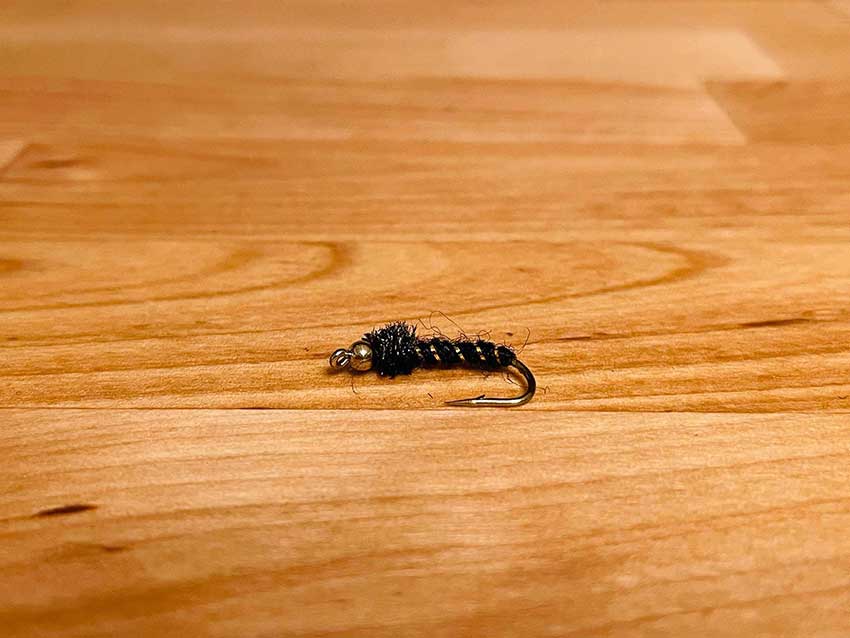
Dylan Hayward
No fly tying list for beginners would be complete without mentioning the zebra midge. This is perhaps one of the most universal and effective flies out there, and it's also pretty simple to tie. One of the greatest things about fishing a zebra midge is that there really isn't a bad time to use it. Sure, you might have more luck with it in the fall and spring, but the zebra midge is so universal it can imitate almost any small insect that's floating in the stream you're fishing. A size 18 zebra midge with some flash to it will produce amazing results, and I dare any angler to tell me otherwise.
The materials couldn't be simpler. An emerger hook of any size between 16 and 20 will work great. You'll also need a 1/16 silver (or gold) bead, UTC Ultra Thread 70 black or green (my preference), and some UTC Ultra Wire in silver. Those four materials will be all you need to start pumping out some zebra midges that will land you any trout that you're after.
Basic Start Up Materials
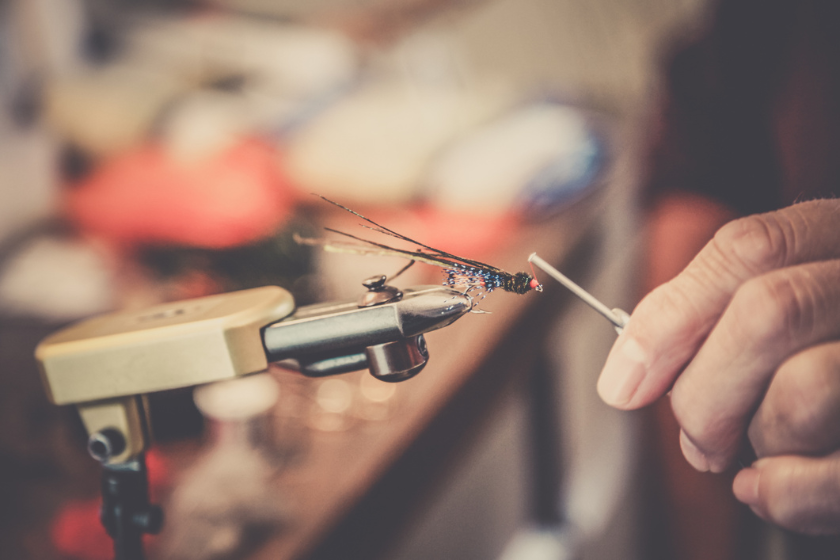
When buying materials for flies, there's no reason to go overboard and break the bank when trying your top flies for beginners. Purchase some simple tools and you'll be more than ready to start tying. Here's what you'll need:
- Bobbins
- Thread (variety of sizes and colors)
- Hooks (get a variety of sizes for different flies)
- Scissors
- Vises
- Beads and Coneheads
- Whip Tools
- Wire (multiple colors)
- Variety of dubbing and feathers (synthetic or natural)
